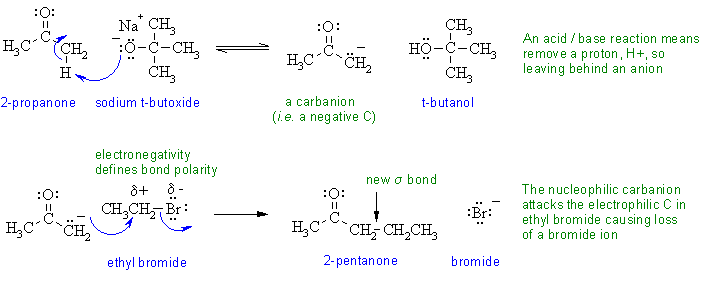
The following diagram shows the solution to the mechanistic question. Note that all the information applies to a single reaction sequence that has been completely described verbally. There is no need for extra reagents or extra steps etc. The curly arrows are drawn specifically to match the text in the question. The biggest problem students have is making sure they understand the language of chemistry. Most students have trouble because they can't draw the structures from the IUPAC names. Read the words carefully, and then make the curly arrows tell that same story. Remember curly arrows go from electron rich to poor and to balance the charges at each step.

If you struggled with this part of the question, first draw the compounds whose names were provided, then think about the types of reactions (e.g. acid / base) and try to fill in the structures in the gaps, then finally add the required curly arrows to account for all the bonding changes.
In this problem, if you didn't know what sodium t-butoxide was, then you should have been able to work it out from the knowing what t-butanol was and that t-butoxide forms t-butanol after an acid - base reaction (i.e. simple proton transfer) and given that it tells you that t-butoxide is a base in the question....
The significant resonance structures can be drawn by breaking the C=O and distributing the charges in accord with electronegativity. Though minor contributors, these are potentially important. For the carbanion, there is an extra contributor where the charge on C is delocalised to the O atom.

Acidity : Propanone is more acidic than propane as indicated by the lower pKa (20 versus 50+ respectively). This is because the conjugate base of propanone is resonance stabilised (see the carbanion above) where the negative charge on C can be delocalised to the more favourable (i.e. more stable) location on the electronegative O atom. Propane, only has a simple, unstabilised carbanion.
If you wanted to prepare 2-decanone using this type of reaction, you should react the carbanion of propanone with 1-heptyl bromide (or 1-bromoheptane) instead of the ethyl bromide (as stated in the question the alkylating agent adds an alkyl group) that was used in the first part of the question (count C atoms... in the question 3 + 2 gives 5.... need 10 have 3.... use C7 alkylating agent).
